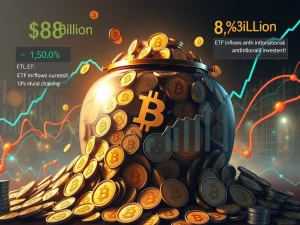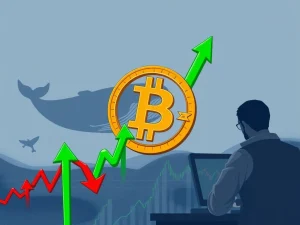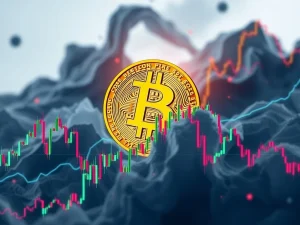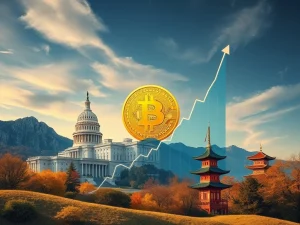Unlocking Elite Status: Owning 1 Bitcoin in 2025

Imagine holding a digital asset so rare, it places you among the global elite. This is the reality of owning 1 Bitcoin in 2025. For many, this milestone seems distant, yet it represents a unique position in the evolving financial landscape. This article explores the exclusivity of the ‘1 BTC club’ and what it means to be part of it.
Owning 1 Bitcoin: The Elite Club of 2025
The aspiration of owning 1 Bitcoin has grown significantly. Data from the blockchain reveals approximately 827,000 to 900,000 addresses currently hold at least 1 Bitcoin (BTC). However, this figure requires closer examination. Many of these wallets belong to exchanges, institutions, or individuals who distribute their holdings across multiple addresses. Therefore, the actual number of unique individuals possessing a full Bitcoin is likely closer to 800,000 to 850,000 people. This group remains remarkably small.
Consider the global population of 8 billion people. This means that owning 1 Bitcoin applies to merely 0.01% to 0.02% of the world. Within the cryptocurrency community, the distribution is equally striking. In 2025, only about 0.18% of all cryptocurrency owners hold a full Bitcoin or more. Consequently, fewer than two in every 1,000 crypto participants have achieved this significant 1-BTC milestone. This exclusivity makes the ‘1 BTC club’ a truly elite group.
The current Bitcoin price, exceeding $120,000, highlights the financial commitment required. Allocating such a substantial amount to a single, volatile asset like Bitcoin demands both high income and strong conviction. Many admire Bitcoin’s potential, but few can invest without overexposing their finances. Interestingly, despite 16 million millionaires globally, fewer than 900,000 individuals hold 1 BTC or more. This makes owning 1 Bitcoin statistically rarer than achieving millionaire status. The question shifts from “How much Bitcoin do you need to be rich?” to “What happens if you own 1 Bitcoin?” The answer is clear: you are already in elite company.
Understanding Bitcoin Scarcity: A Digital Gold Rush
The fundamental principle driving Bitcoin’s value is its inherent Bitcoin scarcity. Satoshi Nakamoto, Bitcoin’s pseudonymous creator, designed a hard cap of 21 million coins. This fixed supply contrasts sharply with fiat currencies, which central banks can print indefinitely. As of mid-2025, over 19.8 million BTC has already been mined through the process of Bitcoin mining. This leaves less than 1.2 million coins yet to be created, intensifying the scarcity.
Furthermore, the available supply shrinks even more when accounting for lost coins and hoarded assets. Millions of Bitcoins are permanently out of circulation due to lost private keys, forgotten passwords, or accidental transfers to unspendable addresses. This further accentuates Bitcoin scarcity. Consequently, the remaining pool for new investors becomes exceptionally tight. The majority of the existing supply is concentrated among a few powerful players, often referred to as ‘whales.’
Approximately 1.86% of all Bitcoin addresses control a staggering 90% of the total supply. Major exchanges, early adopters, and institutional custodians dominate the ledger. For example, just four addresses, each holding between 100,000 and 1 million BTC, collectively own 14% of all coins. The top 100 addresses command over 58% of the entire supply. This highly centralized distribution underscores why owning 1 Bitcoin is a significant achievement. With tightening Bitcoin tax policies and increasing competition for the limited supply, reaching whole-coin status becomes increasingly challenging. This inherent scarcity ensures that the value proposition of Bitcoin remains strong over time.
Global Bitcoin Ownership Distribution: Bridging the Access Divide
The global Bitcoin ownership distribution highlights significant access divides. A 2024 Triple-A survey indicated that roughly 6.8% of the global population, approximately 560 million people, owns some form of cryptocurrency. However, only a small fraction within this group holds enough BTC to reach whole-coin status. Most crypto owners possess less than 0.01 BTC, reinforcing how far out of reach owning 1 Bitcoin remains for the majority. This uneven distribution reflects various socio-economic and infrastructural barriers.
Infrastructural challenges significantly impede widespread Bitcoin ownership. An estimated 1.4 billion adults worldwide remain unbanked. They lack access to traditional financial services, often due to limited internet connectivity, lack of digital identity, or insufficient access to crypto services. Even in regions where mobile money is prevalent, such as Sub-Saharan Africa or South Asia, users encounter hurdles. These include Know Your Customer (KYC) restrictions, high on-ramp fees for converting local currency to crypto, or uncertain Bitcoin tax regulations. These factors make Bitcoin investment practically unreachable for millions, despite Bitcoin’s promise of borderless finance.
Beyond practical barriers, psychological and behavioral factors also deter full Bitcoin ownership. Even with capital and access, the fear factor is potent. Bitcoin mining and trading activity in 2025 have produced wild price swings. For instance, Bitcoin surged past $109,000 only to plunge back to the mid-$70,000s within weeks. Such volatility can be paralyzing, especially for those unaccustomed to 20%-30% drawdowns. Furthermore, Bitcoin still carries the stigma of speculation for many. High-profile figures like Robert Shiller, Warren Buffett, and George Soros have labeled it everything from a bubble to a Ponzi-like scheme. These criticisms, combined with real cases of market manipulation, cause many to question whether owning 1 Bitcoin holds long-term meaning or if it is merely a high-risk gamble. This complex interplay of factors shapes the current Bitcoin ownership distribution.
Navigating Bitcoin Investment: Strategies for Accumulation
Strategies to reach owning 1 Bitcoin do exist, but they consistently require time, calculated risk, or substantial capital. The most straightforward and widely recommended path is accumulation through dollar-cost averaging (DCA). By regularly investing a fixed amount of money, regardless of Bitcoin’s price, buyers can effectively ride out volatility. This method helps build towards owning 1 Bitcoin without the psychological strain often associated with large, lump-sum purchases. DCA mitigates the risk of buying at a market peak and smooths out the average purchase price over time. This consistent approach makes Bitcoin investment more manageable for many.
Other individuals pursue yield-generating crypto programs to boost their returns. These platforms offer interest on deposited cryptocurrencies, potentially accelerating the path to a full Bitcoin. However, these programs carry added risks, including smart contract vulnerabilities, impermanent loss, or platform insolvency. High earners often achieve full-coin accumulation by simply diverting a portion of their disposable income into Bitcoin. For corporations, direct Bitcoin purchases with treasury reserves have transformed companies like MicroStrategy and Tesla into significant corporate whales. Their actions demonstrate that owning 1 Bitcoin, or even hundreds, is more accessible when operating at scale with substantial capital. These varied approaches highlight the diverse landscape of Bitcoin investment.
Access to Bitcoin is also expanding significantly, making Bitcoin investment more mainstream. Spot Bitcoin exchange-traded funds (ETFs) launched in 2024, providing a regulated avenue for individuals to buy Bitcoin through traditional brokerage accounts. Products like BlackRock’s IBIT and Fidelity’s FBTC have attracted over $120 billion in capital. These ETFs offer new, regulated on-ramps for mainstream investors, simplifying the process of gaining exposure to Bitcoin without directly holding the asset. For those working in the Web3 space, considering crypto salaries can be a viable strategy. If paid in Tether’s USDt (USDT), employees can easily convert a portion into Bitcoin each month with minimal fees. In some cases, receiving a full salary in Bitcoin directly is even possible. These developments are reshaping how individuals approach Bitcoin investment and accumulation.
The Future of Bitcoin: What 1 BTC Means for Tomorrow
Looking ahead, the future of Bitcoin appears increasingly intertwined with its inherent scarcity and growing adoption. As the remaining unmined supply dwindles and more coins are lost or hoarded, the pressure on available supply will only intensify. This dynamic suggests that owning 1 Bitcoin could become even rarer and more valuable in the coming decades. The ‘digital gold’ narrative strengthens with each halving event, which reduces the supply of new Bitcoins entering the market. This predictable, deflationary model positions Bitcoin as a compelling store of value, especially in an era of global economic uncertainty and inflation.
The continued institutional adoption and integration into traditional finance will also shape the future of Bitcoin. With more regulated products and services emerging, Bitcoin’s legitimacy as an asset class grows. This broadens its appeal beyond early adopters to a wider pool of investors, further increasing demand against a fixed supply. The long-term implications for those who manage to accumulate a full Bitcoin are significant. Their position within the global financial system could evolve dramatically, offering unprecedented financial autonomy and wealth preservation. The journey to owning 1 Bitcoin, while challenging, could therefore yield substantial rewards.
Ultimately, the future of Bitcoin depends on a confluence of technological advancements, regulatory clarity, and sustained global interest. Despite its volatility and ongoing debates, Bitcoin has demonstrated remarkable resilience and growth. For those who successfully navigate the complexities of Bitcoin investment and achieve whole-coin status, their foresight and conviction will likely be rewarded. The ‘1 BTC club’ is not just about a number; it represents a belief in a decentralized, digitally scarce future. As the world continues its digital transformation, the significance of owning 1 Bitcoin will only grow, solidifying its status as a truly remarkable asset.








